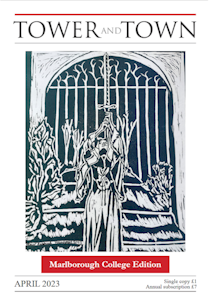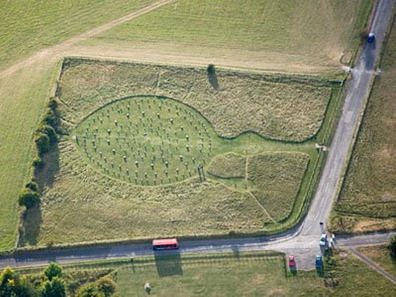

Tower and Town, April 2023 (view the full edition) (view the full edition)Stonehenge, Durrington Walls And WoodhengeStonehenge, Durrington Walls and Woodhenge are sites that are all part of a large 'Neolithic complex'1 centred around the nearby River Avon. They are now part of the UNESCO World Heritage Site of Stonehenge, Avebury and Associated Sites which also includes some of the oldest recorded settlements in Britain. There are multiple links between these sites as well as just the geography, and this article will explore their history and how this is true. How are the sites connected? Before beginning to explore the connection between Stonehenge, Durrington Walls and Woodhenge, it is worthy to note that Stonehenge is the most famous of the sites being discussed and therefore is often the point of comparison and link between the sites. With this in mind, the first and most obvious connection there is between these sites is the many geographical similarities, which are highlighted by the fact the sites are all part of the Stonehenge Avenue and the same World Heritage site. Physical similarities also play a key part in arguing for the connection between the monuments. Around the same time the sarsen stones were erected in the second period of building Stonehenge, two sets of concentric timber circles were built within a large settlement two miles northeast of the monument. One of these circles, called the 'Southern Circle', was at the centre of an ancient settlement. By 2460 BC the ruins were enclosed by the bank and ditch of Durrington Walls. Outside of the south entrance of the same settlement a third concentric timber circle was built, now known as Woodhenge. This parallel between the sites in terms of structure strongly suggests a connection exists. At Durrington Walls the avenue was built in roughly 2500 BC between the 'Southern Circle' of the site and the River Avon and closely resembles the one from the third stage of Stonehenge's construction, reinforcing the idea that the sites are linked. The discovery of this road also meant that there was a possibility that Durrington Walls was part of a larger Neolithic complex that was linked to Stonehenge and Woodhenge as both were connected to the river by roads as well. The multitude of physical similarities between Stonehenge and Woodhenge was also a key factor in the naming of the site as Woodhenge2. The lone entrance of the site also faces Durrington Walls, further proving the sites' connection. The sites of Stonehenge, Durrington Walls and Woodhenge are linked in another way too. One of the circles at Durrington Walls, called the 'Southern Circle', was at the centre of an ancient settlement. This was a short-lived community but is thought to have been the camp of the builders of Stonehenge, providing yet another link between the two sites. Similarly, although origins of Woodhenge remain unknown, many historians believe it was built by the same group that built Stonehenge too3. However, more obscure links also exist. All three sites have focuses on solstitial alignments. The Durrington Walls avenue was aligned toward the summer solstice sunset, while the 'Southern Circle' faced the winter solstice sunrise which was the opposite to the road at Stonehenge, emphasising the parallels between the sites. This alignment based on the main solstices therefore emphasises the possibility of Stonehenge and Durrington Walls being built as parts of a single complex based around the Avon. Stonehenge and Woodhenge also share the same alignments to the summer and winter solstices as both contain either timber or stones in an oval that face in those directions. These similarities suggest all three sites had spiritual or ceremonial importance and may have been used together in processional routes or ritual ceremonies.  Currently many of these theories rely on much speculation and educated hypothesis. However, these monuments are still being explored and being further investigated, which in time may reveal more connections to each other, as well as to other sites along the Stonehenge Avenue or possibly the rest of the country (which there is some rationale for due to the similar styles of settlement that exist in the Orkney Islands in Scotland). Although, for now the main links between these Neolithic wonders is their unique focus on solstitial alignments and the closeness of their locations. Footnotes: 1Naomi Blumberg, Durrington Walls (Britannica) https://www.britannica.com/topic/Durrington-Walls Poppy G-C (L6) |